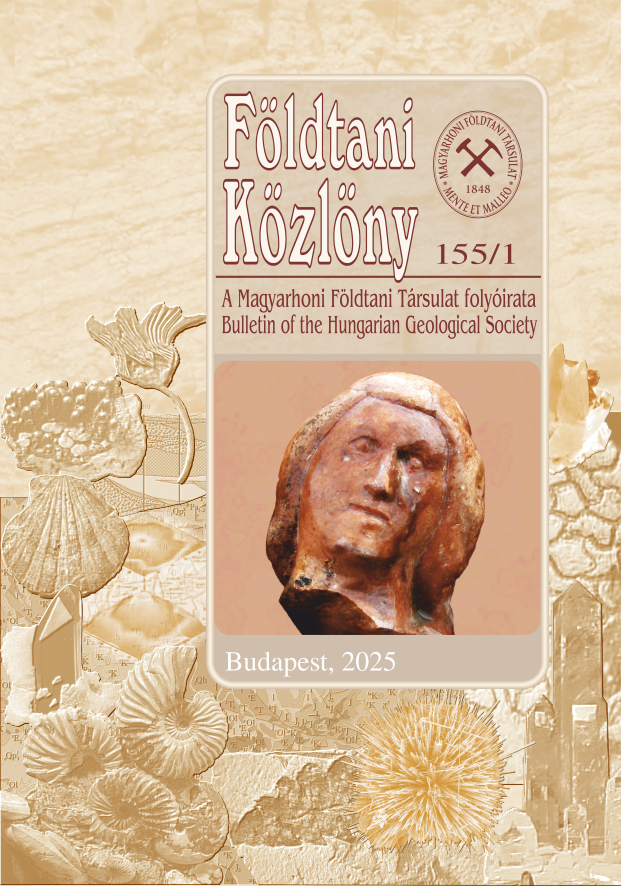New mineralogical data concerning volcanites from the district of Mád, in North East Hungary (Tokaj Mts)
Abstract
This study presents new data on mordenite and clinoptilolite, rectorite, iron oxide, halloysite, smectite and SiO2
phases from quarries in hydrothermally altered rhyolite tuff, in the environs of Mád, Tokaj Mts., NE Hungary.
X-ray powder diffraction (XRPD), scanning (SEM) and transmission electron microscopic (TEM, HRTEM,
ATEM) techniques were used to identify minerals and gain more details about their occurrence.
An unusual iron oxide/hydroxide phase (that had earlier been considered as haematite/hydrohaematite) was
recognised at Király Hill. Although its XRPD diagram shows reflections which can be interpreted as haematite,
according to TEM data neither its structure nor its chemical composition comply with that of haematite. Király Hill was
identified as a new locality of halloysite.
The X-ray powder diffraction study of a sample from the Bomboly area indicates rectorite (as was known earlier);
however, TEM images show only separate illite and smectite crystals, without any evident structural interrelation
between them.
A Suba-oldal smectite and an SiO2 phase can also be found. Using TEM the thickness of the individual smectite
flakes was determined and the SiO2 phase could be identified as cristobalite (HRTEM- high resolution TEM).
The zeolite minerals were identified on the basis of sets of their D(hkl) values and symmetries measured on selected areaelectron diffraction patterns (SAED). Their respective compositions were quantified simultaneously using energy
dispersive X-ray (EDX) spectra which were acquired on the corresponding areas. The hydrothermally altered rhyolite tuff
at Harcsa-tető (Harcsa Hill) contains an Na-free, Ca-containing zeolite; according to XRPD results this corresponds to
mordenite. On the other hand, in the Suba-oldal area clinoptilolite occurs with additional Mg and K as exchangeable
cations.











